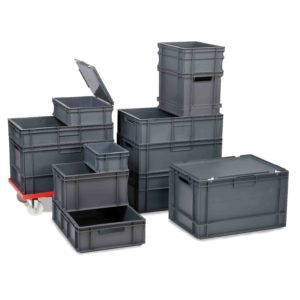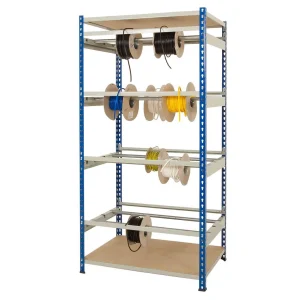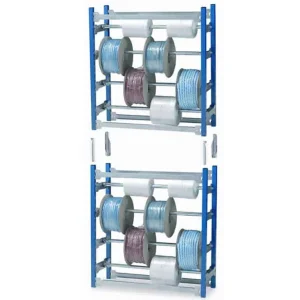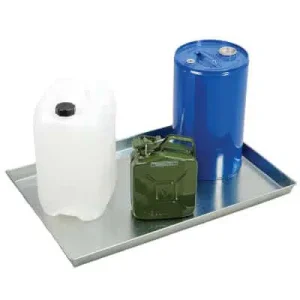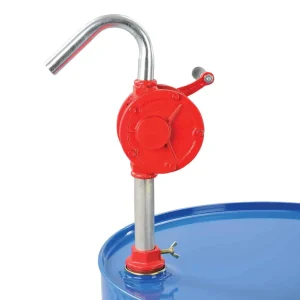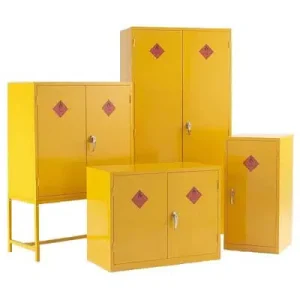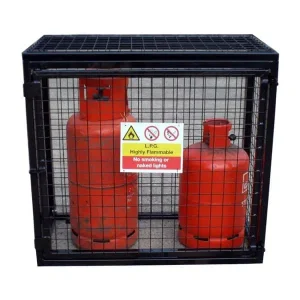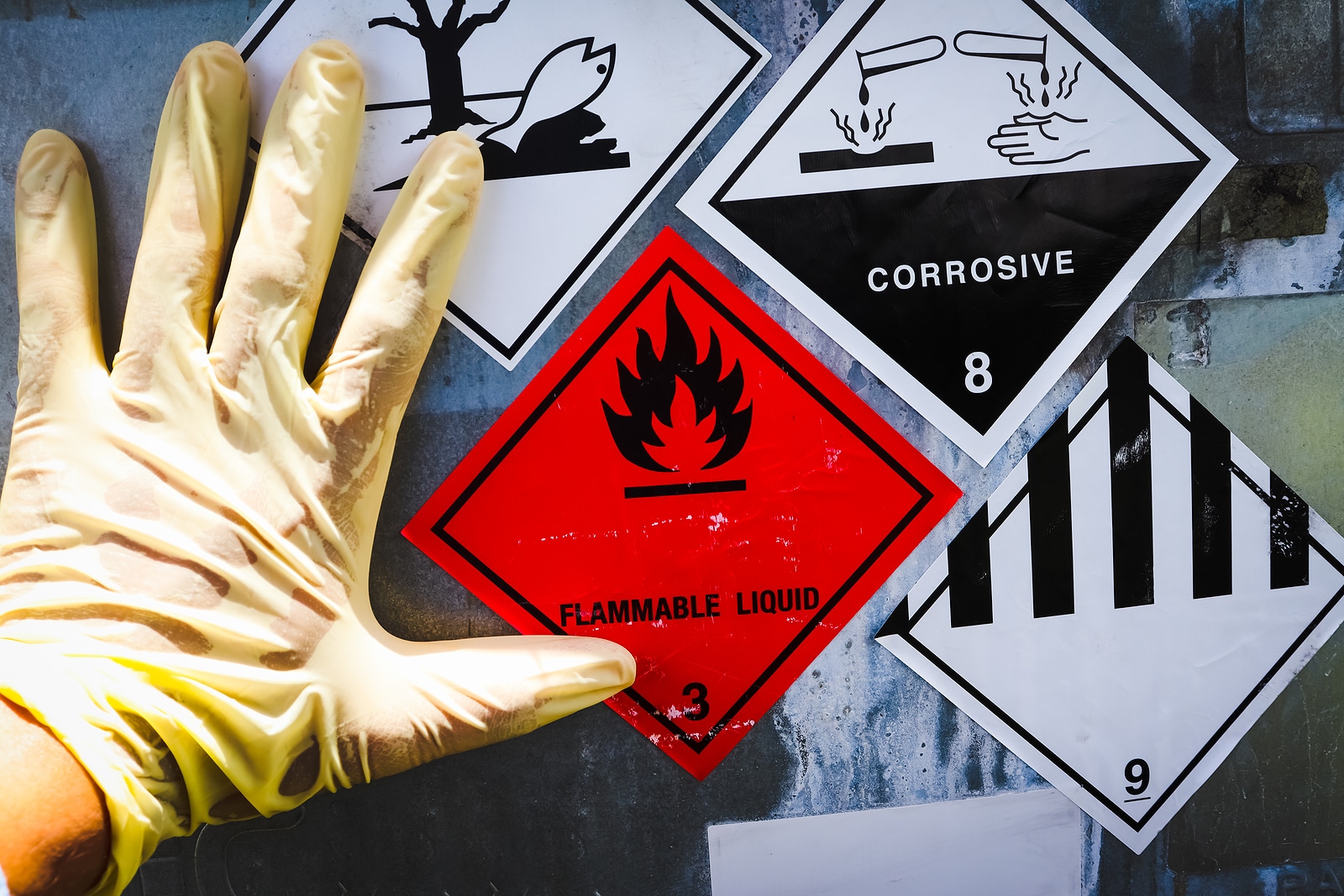
Many types of chemicals can cause health issues, such as burns, scalding or skin irritation. In some cases, chemicals can also be fatally poisonous to humans. Specific chemicals may also be flammable and cause a potential fire risk. When inhaled, ingested or there is dermal contact with a chemical there may also be other invisible health hazards, such as long term illness, organ damage and more. This makes working with chemicals especially challenging in the workplace.
There is no need to avoid chemicals. You might have to work with a chemical hazard as part of a normal workday and there are many ways this can be done safely. In the UK, the government keeps a full list of all chemical hazards. Potential chemical hazards may include the following:
- Acetic acid
- Acetone
- Acetonitrile
- Acetylene
- Acrylamide
- Acrylonitrile
- Aluminium
- Aluminium phosphide
- Ammonia
- Aniline
- Arsenic
- Arsine and stibine
- Asbestos
- Benzene
- Benzo(a)pyrene or polycyclic aromatic hydrocarbons PAHs
- Benzotrichloride
- Benzyl chloride
- Brominated flame retardants
- Bromine
- Cadmium
- Carbon dioxide
- Carbon disulphide
- Carbon monoxide
- Carbon tetrachloride
- Chlorine
- Chlorine dioxide
- Chloroform
- Chromium
- Copper
- CS gas
- Cyclohexane
- 1,2-dibromoethane
- 1,2-dichloroethane
- Dichloromethane
- Diesel
- Dioxins
- Ethanol
- Ethylene glycol
- Ethylene oxide
- Formaldehyde
- Formic acid
- Hydrazine
- Hydrogen chloride
- Hydrogen cyanide
- Hydrogen fluoride
- Hydrogen peroxide
- Hydrogen sulphide
- Isopropanol
- Kerosene
- Lead
- Liquefied petroleum gas (LPG)
- Magnesium
- Manganese
- Mercury
- Methane
- Methanol
- Methyl bromide
- Methyl ethyl ketone
- Mustard gas
- Naphthalene
- Nerve agents
- n-Hexane
- Nickel
- Nitric acid
- Nitrobenzene
- Petrol
- Phenol
- Phosgene
- Phosphine
- Phosphorus
- Phthalates
- Picric acid
- Pyridine
- Sodium chlorate
- Sodium dichromate
- Sodium hydroxide
- Sodium hypochlorite
- Sodium and potassium cyanide
- Styrene
- Sulphur dioxide
- Sulphuric acid
- Tetrachloroethylene
- Titanium tetrachloride
- Toluene diisocyanate
- Toluene
- Tributyl phosphate
- Trichloroethylene
- Vinyl chloride
- White spirit
- Xylene
You can use personal protective equipment and take other control measures when working with all of these chemicals. Aside from exposure limits, there are several things you can do to reduce the risk of any issues when working with problem chemicals and improve human health.
Many types of hazards in the workplace can occur, so there is robust health and safety legislation that is enforced by the Health and Safety Executive (HSE). Other relevant legislation includes the Control of Substances Hazardous to Health Regulations 2002 (COSHH).
To comply with this legislation in the workplace, chemical safety strategies must include the following:
Signage
Often, safety is improved simply by awareness. For example, if you have a laboratory where chemicals are in regular use, one key control measure is signage. Signs can be posted in a laboratory and used to indicate whether a chemical has the following properties:
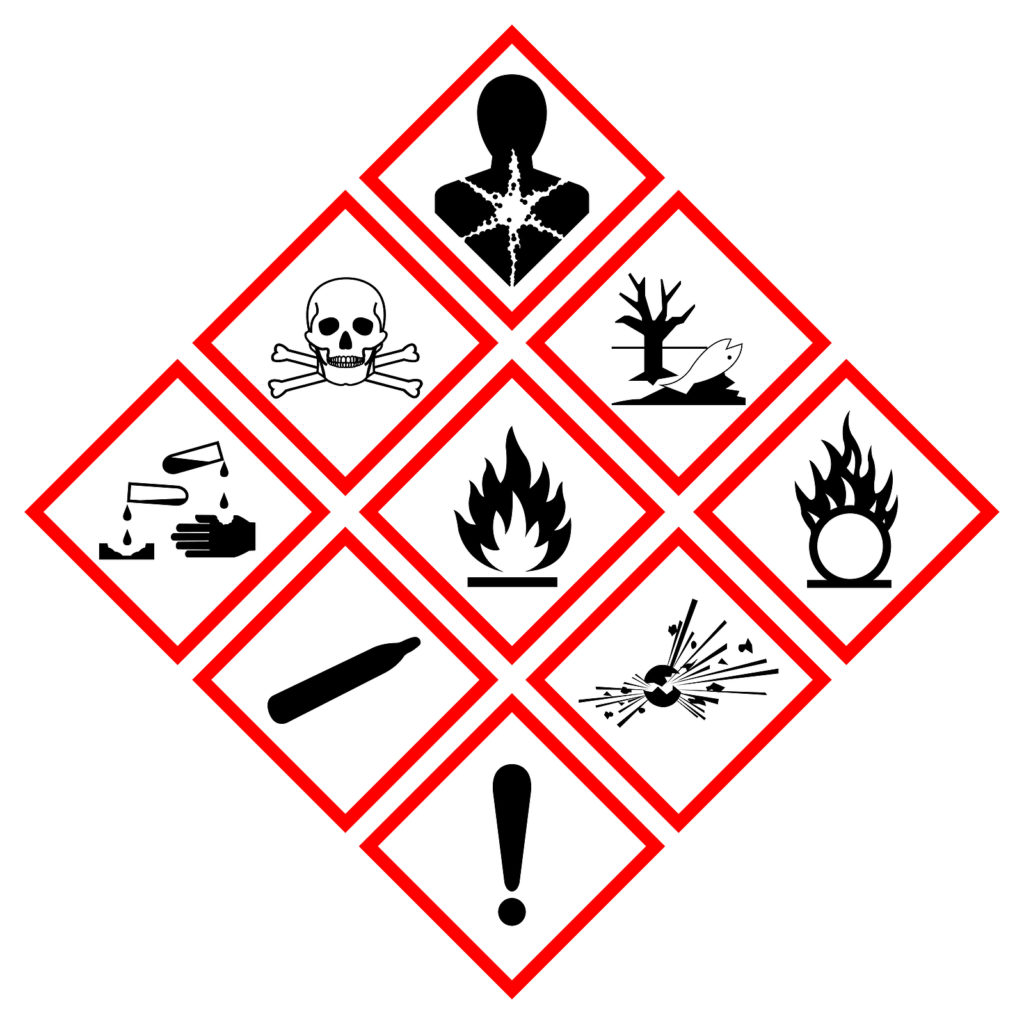
- Explosive
- Flammable
- Oxidising
- Corrosive
- Acute toxicity
- Hazardous to the environment
- Health hazards or hazards to the ozone layer
- Serious health hazards, such as long term illness
- Gas under pressure
See more on how to recognise hazard symbols in the workplace in our article and find an explanation of what the HSE recommends. You can find more details on the official HSE website. A high hazard substance will require easy identification for you to pass health and safety standards.
Classification and Labelling
One of the most important engineering controls for chemicals in the workplace is simply labelling them. With a large number of different chemicals in the workplace labelling becomes essential, especially when using both stable and unstable chemicals. Chemical hazards do not just affect the science sector, either – there are different forms of chemicals in all industries. Whether it’s bleach in an office bathroom or cleaning chemicals in a kitchen, labelling is crucial and mandated at the manufacturing stage.
Personal Protective Equipment
Sometimes personal protective equipment (PPE) will suffice for the safe use of chemicals in the workplace. For example, if the main hazard is a chemical substance that causes skin irritation, wearing gloves will reduce the risk of exposure. Another example is the use of masks in areas like food and textile production, where airborne substances can easily be inhaled.
Several types of PPE that can be helpful when working with chemicals include:
- Eye protection: Rubber goggles or spectacles can prevent hazardous substances from damaging or irritating the eyes. Many chemicals can get airborne and cause eye irritation too. Eye protection is crucial, as some chemicals can cause instant blindness.
- Head protection: Protecting the face and head can be necessary when the chemical might cause both skin irritation and eye irritation, such as when working with liquids. Head and face protection is common in the healthcare and pharmaceutical industry.
- Hand protection: Keeping the hands free from chemicals is difficult when working with them every day, so you can get a great amount of protection from gloves. Many thick chemical handling gloves also exist, which make it possible to safely work with hot or unstable chemicals as well.
- Lung protection: A mask can help to protect not only the whole head, but also the lungs, so you will need to use them when working with chemicals in powders. Lung irritation can cause serious health problems. Fumes from liquid chemicals are also common.
When working with chemicals during manufacturing you might also use hearing protection, which can reduce the risk of damaging the hearing when using loud equipment or machinery. For example, many people have to handle chemicals using noisy drum handling equipment.
Training and Workplace Culture
An important control measure when working with the most hazardous substances is effective training. Staff training will give a firm more confidence and is also considered important legal protection during enforcement proceedings. For example, in a laboratory, initial training followed by regular refresher training is a typical strategy to ensure all workers consistently have the skills they need.
Much of health and safety is cultural. With regular training, designated safety officers, frequent independent inspections and clear workplace signage, you can see how a commitment to safety can build up in a commercial or industrial setting. Culture affects all aspects of workplace safety, not just working with chemical hazards.
Storage
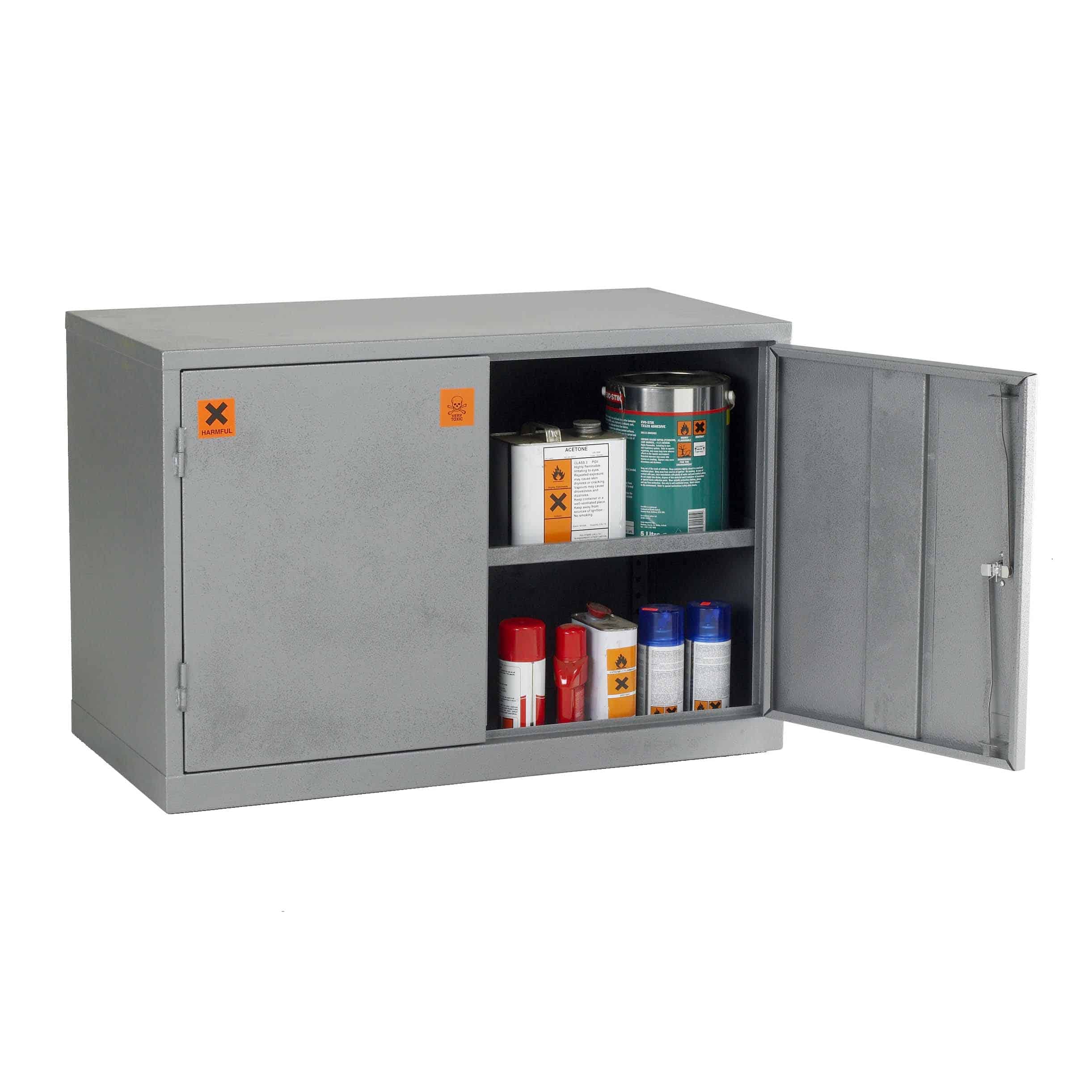


When it comes to chemical hazards, it is not only the use of the chemicals that will be subject to safety protocols; it is where they are kept that affects safety, too. We offer many hazardous storage products that are ideal for chemicals. The most notable products in our range are the various COSHH cabinets that we stock, which are perfect for storing chemicals.
These are not simple cabinets that you would see in a bathroom or kitchen. They are designed to include the following important safety features:
- HSG51 and DSEAR regulation compliance
- Sturdy, lockable designs
- Sump capacities, in case of spillage, on some models
- 30 minutes of fire resistance
- Tamperproof, 2 point locking systems
- COSHH warning labels included
- Steel-frames
- Welded seams
Storing a potentially hazardous chemical correctly will reduce the risk of any accidents and can even protect the building in case of fire. We are very familiar with storage solutions for all kinds of items, as we sell many great products, and all of these come with free UK mainland delivery.
Get in touch with us if you have a question about a specific product.
Consequences for Not Dealing with Chemical Hazards
There is a moral duty to keep people safe in public life and compliance with the various safety standards is a legal duty. However, you can easily find yourself completely unintentionally in the wrong when it comes to the rules. This is the responsibility of the employer and ignorance of the rules can come with severe consequences.
Potential consequences of failing to deal with chemical hazards in the workplace include:
- Accidents: The guidance exists to prevent situations in which an accident might take place; if these situations are not prevented, the likelihood of those situations coming up and the potential for accidents increases dramatically.
- Injury: Poorly-managed chemical hazards can result in a higher chance of an accident, which then results in a higher chance of an injury occurring. So, whether it is a spill, contamination or a chemical burn, injuries become much more likely.
- Fines: You can receive fines for failing to comply with any of the HSE’s regulations. If you receive a penalty you will also find that the HSE will be more intensive with its enforcement in the future.
- Legal action: Ultimately, the HSE is a legal body and not following guidelines will result in legal ramifications. Legal action may include fines, orders to stop work, and even lawsuits in the case of injury. Legal action will also be a permanent mark on a company’s reputation.
Undermining the safety of chemical hazards in the workplace comes with a lot of other potential hazards. On top of these consequences, employers who are not trusted by their employees may also face recruitment and staffing problems.
What is a Chemical Hazard at Work?
Chemical hazards at work take many forms and the type you face will depend heavily on the type of industry you are working in and the specific role you serve. Whether it’s a laboratory, a factory, or even an office, most people have some contact with chemicals in the workplace.
We offer many amazing storage products for commercial and industrial settings, so we are familiar with how companies should understand and deal with various types of chemical hazards.
Looking for the perfect chemical storage product? Browse our site and buy online. We offer all of our products with a low price promise. Contact us if you have any product queries.

